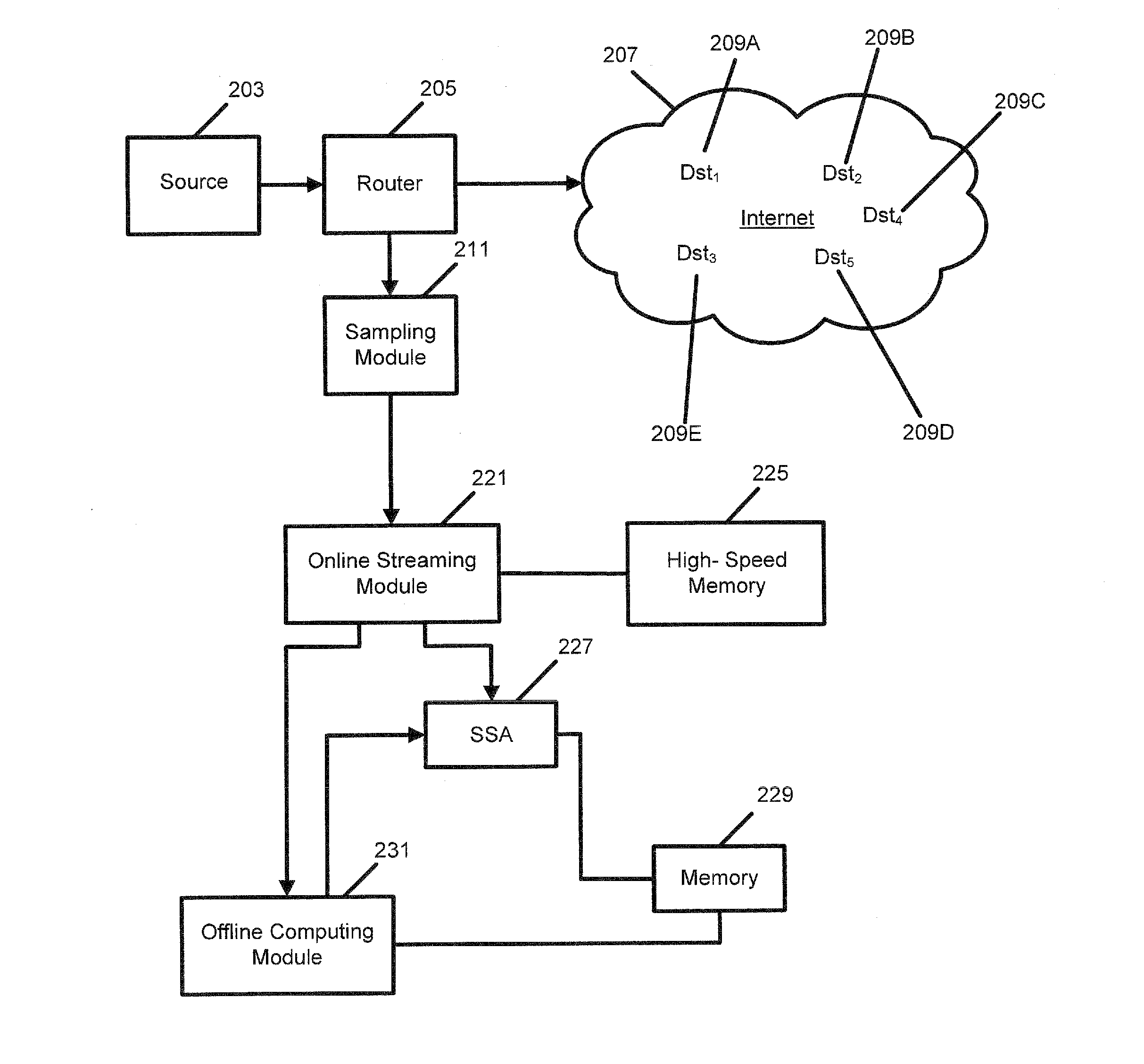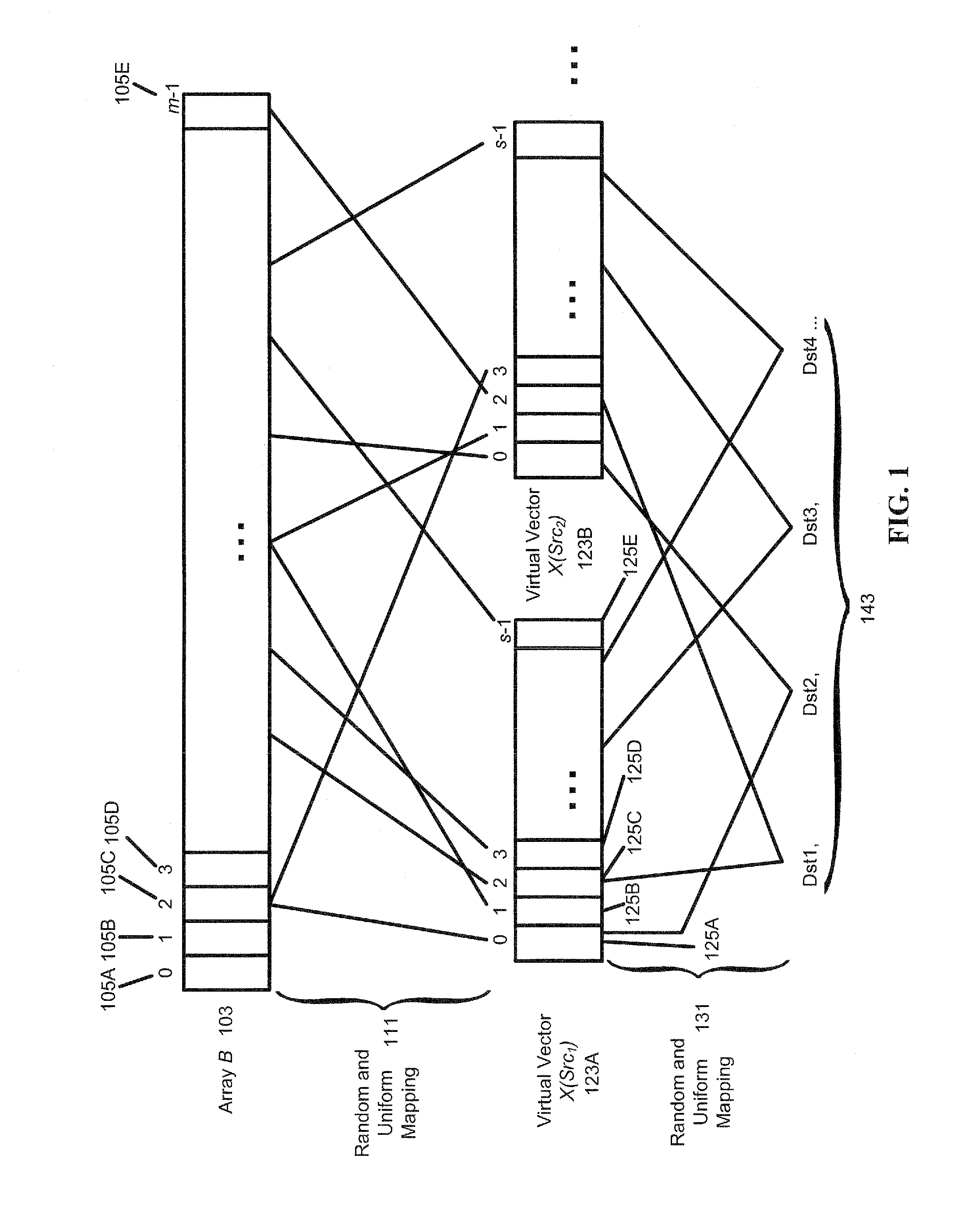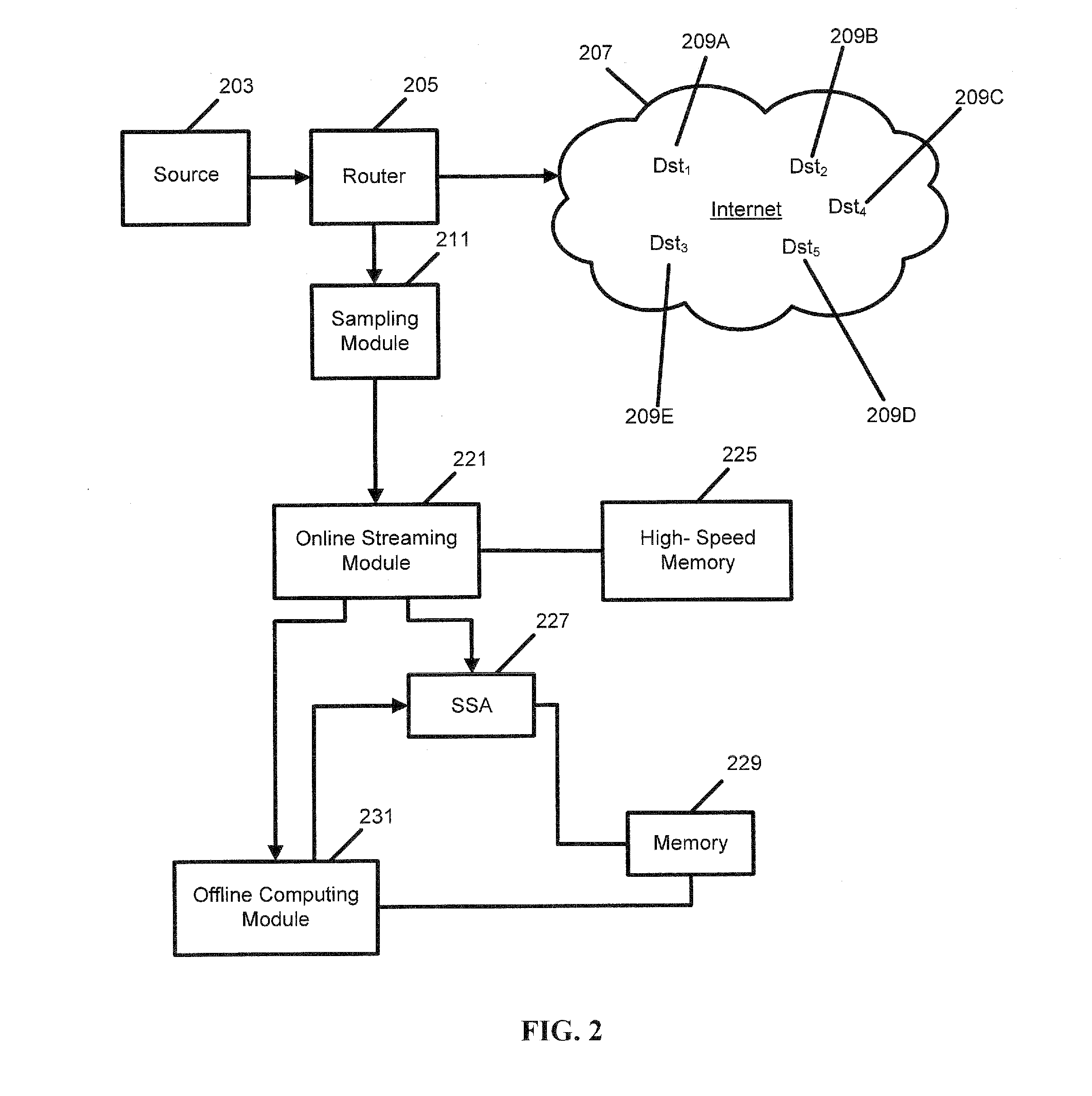System, method, and media for network traffic measurement on high-speed routers
a network traffic and high-speed router technology, applied in the field of system, method and media for network traffic measurement on high-speed routers, can solve the problems of increasing throughput, difficult measurement period, and inability to keep the per-flow state, so as to prevent the noise of sharing. the effect of removing
- Summary
- Abstract
- Description
- Claims
- Application Information
AI Technical Summary
Benefits of technology
Problems solved by technology
Method used
Image
Examples
Embodiment Construction
[0036]Embodiments of the subject invention pertain to systems, methods, and media for network traffic measurement. In one aspect of an embodiment of the invention, a data structure is provided for storing network contact information in a small memory space. The data structure is based on an array of physical memory locations. Virtual vectors are constructed from the array for each source, wherein each element in each virtual vector is assigned to a corresponding physical memory location within the array. The physical memory locations are shared between the virtual vectors uniformly at random so that the noise introduced by sharing can be predicted and removed. The physical memory locations can comprise any number of data elements. In a particular embodiment of the invention, the physical memory locations are single bits and the array is a one-dimensional bit array. In other embodiments, the data structure for the physical memory locations is based on a two-dimensional array, a hash ...
PUM
 Login to View More
Login to View More Abstract
Description
Claims
Application Information
 Login to View More
Login to View More - R&D
- Intellectual Property
- Life Sciences
- Materials
- Tech Scout
- Unparalleled Data Quality
- Higher Quality Content
- 60% Fewer Hallucinations
Browse by: Latest US Patents, China's latest patents, Technical Efficacy Thesaurus, Application Domain, Technology Topic, Popular Technical Reports.
© 2025 PatSnap. All rights reserved.Legal|Privacy policy|Modern Slavery Act Transparency Statement|Sitemap|About US| Contact US: help@patsnap.com



